Long-duration orbital platforms like the International Space Stations rely on regular resupply from the ground to maintain a continuous human presence in space. Today, a fleet of vehicles keeps the space station and its crews safe and able to conduct world-class research. The first resupply spacecraft, Progress 1, lifted off on Jan. 20, 1978, to maintain the Soviet Union’s Salyut 6 space station and its two-person resident crew. Progress 1 not only brought consumables and experiment hardware for the cosmonauts but also refueled the station, replenished its atmosphere, boosted its orbit, and removed unwanted trash by burning it up on reentry. Updated versions of Progress cargo vehicles continue to be a mainstay in the fleet of spacecraft that regularly resupply the International Space Station.
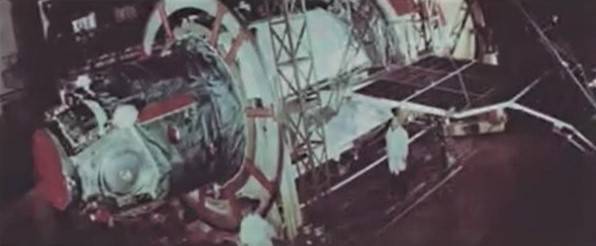
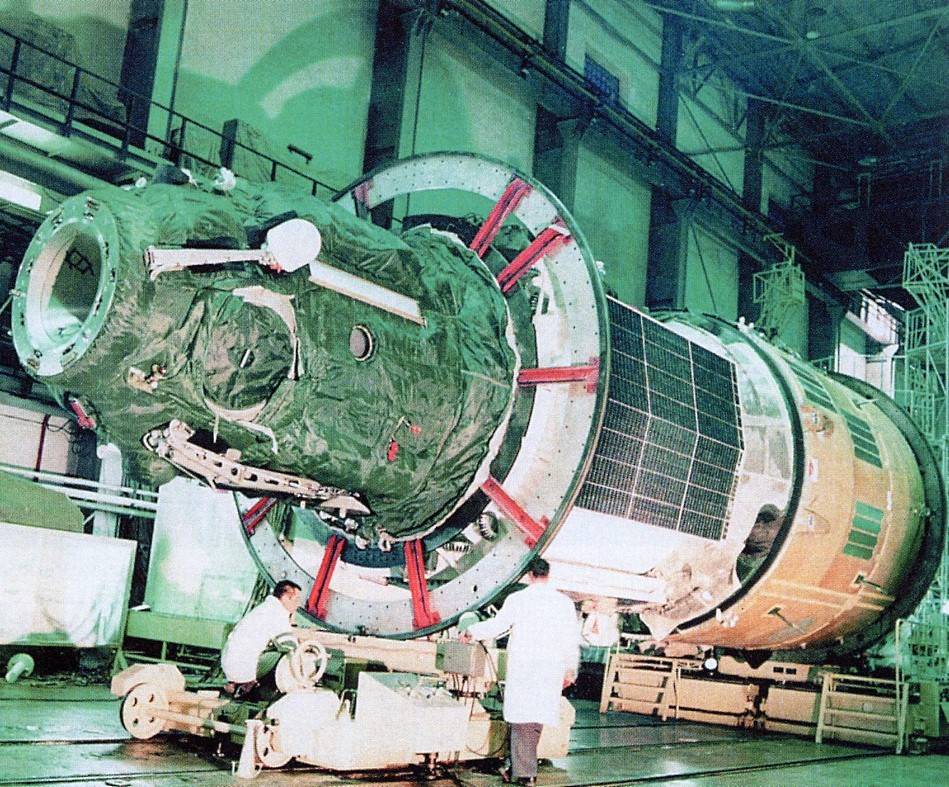
Left: Engineers at the Baikonur Cosmodrome in Soviet Kazakhstan perform ground tests on
the Salyut-type space station that became known as Kosmos 557 following its on-orbit
thruster failure. Right: The Salyut 4 space station during ground testing at Baikonur.
Credit: Images courtesy of RKK Energia.
The Soviet Union’s main design bureau for human spaceflight, known then by its Russian acronym TsKBEM and now RKK-Energia, began design work on what became the Progress resupply ship in mid-1973, completing it in February 1974. The concept of using uncrewed spacecraft to resupply and refuel space stations in low Earth orbit arose from two sources. In May 1973, a Salyut space station suffered an anomaly during its first orbit during which one of its attitude control thrusters failed open, depleting the station’s fuel supply. Because the failure prevented any cosmonauts from ever occupying the station, the Soviets gave it the cover name Kosmos 557. Soviet planners realized they needed to design a system for in-orbit refueling and resupply of future stations. This dove-tailed with their plans to build a next-generation Salyut space station to conduct ever longer flights. By equipping this future station with two docking ports, a resupply craft could dock at the same time that a crew resided aboard the facility. Soviet engineers based the Progress design on the Soyuz crew transport vehicle, using essentially the same propulsion and service module at the rear of the spacecraft, using the front orbital compartment to carry dry cargo, and replacing the middle crew descent module with pressurized tanks to refuel the station with propellant and tanks to replenish its atmosphere. Unlike the Soyuz that separated into its three components for reentry, the Progress remained intact. The Soviets tested some systems needed for long-duration flights of both Soyuz and Progress spacecraft during the 90-day uncrewed Soyuz 20 mission that remained docked at Salyut 4 between November 1974 and February 1975. They readied the first production Progress spacecraft for launch in November 1977 to support the first long-duration expedition to Salyut 6, the first Soviet space station equipped with two docking ports.


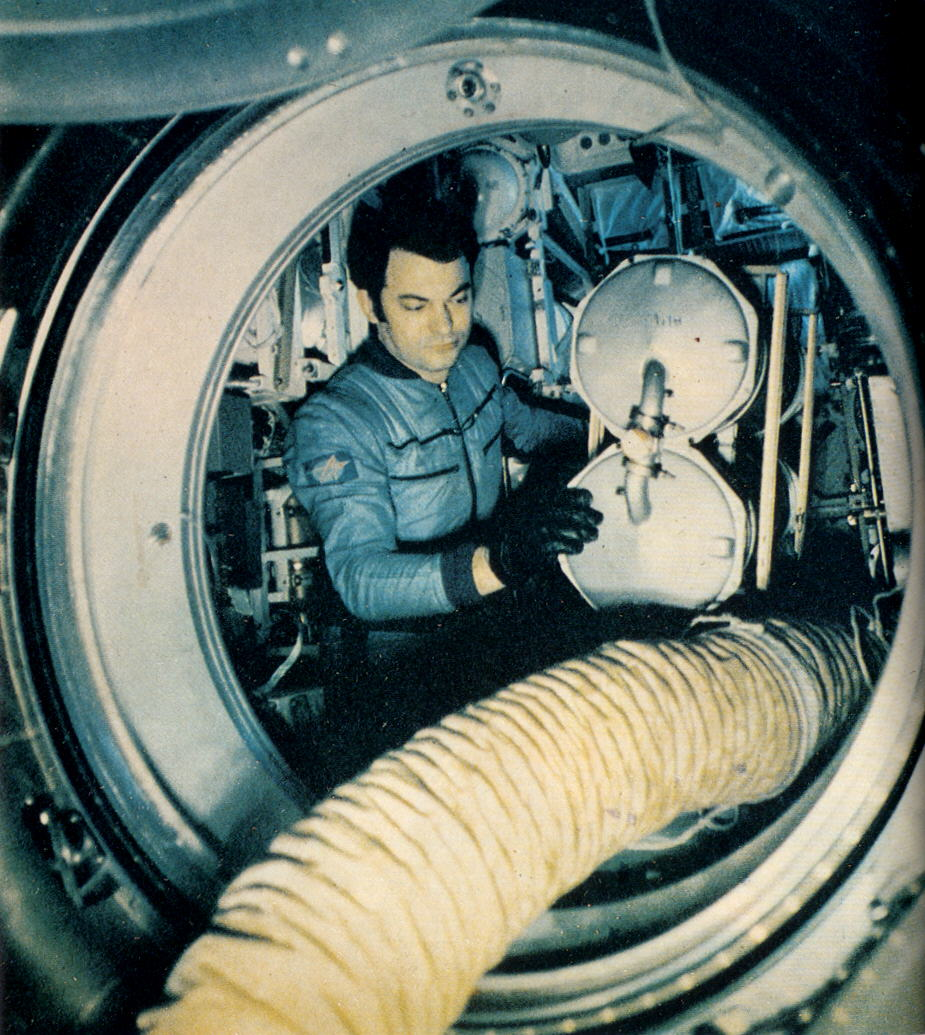
Left: Launch of the Progress 1 cargo resupply vehicle in January 1978. Middle: The Progress
1 cargo ship approaches the Salyut 6 space station. Right: Soviet cosmonaut Yuri V.
Romanenko unloads equipment delivered to Salyut 6 by Progress 1.
Credit: Images courtesy of RKK Energia.
The launch of Progress 1 took place on Feb. 20, 1978, from the Baikonur Cosmodrome in Soviet Kazakhstan. Following a two-day rendezvous profile, Progress 1 automatically docked at Salyut 6’s aft port. The spacecraft brought 5,100 pounds of cargo to the space station, including 2,200 pounds of propellent and oxygen, and 2,900 pounds of food, replacement parts, scientific instruments, and other supplies. The onboard crew of cosmonauts Yuri V. Romanenko and Georgi M. Grechko opened the hatches to the Progress and began unloading its contents, beginning with personal mail, newspapers, and fresh fruit. The science equipment delivered included the Splav furnace for materials processing experiments. Once emptied, the cosmonauts began filling Progress with trash and unneeded equipment. The first transfer of fuel from Progress to Salyut began on Feb. 2 and finished the next day. On Feb. 5, Progress fired its engines to raise the station’s orbit, and purged the fuel lines with pressurized nitrogen to prevent any toxic propellant spills during the undocking that occurred the next day. The spacecraft drifted away to a distance of about 5-6 miles, then approached the station to test its backup rendezvous control system. On Feb. 8, Progress 1 fired its engines for the deorbit burn for a destructive reentry over the Pacific Ocean, having successfully demonstrated the first resupply and refueling of a space station during its 19-day mission. The supplies brought by Progress 1 enabled Romanenko and Grechko to complete their then record-breaking 96-day flight.

Mockup of the Salyut 6 space station, with an attached Progress cargo vehicle, left,
and a Soyuz crew vehicle, right, on display in Moscow.
Credit: Image courtesy of Mark Wade.
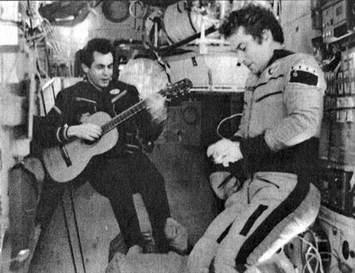
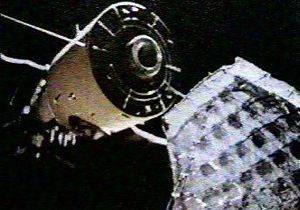
Left: Soviet cosmonaut Aleksandr I. Ivanchenkov plays an acoustic guitar delivered to
Salyut 6 by Progress 3 in 1978, as his crewmate Vladimir V. Kovalenok looks on.
Right: The KRT-10 radio telescope deployed by Progress 7 upon its departure
from Salyut 6. Credit: Images courtesy of RKK Energia.


Left: Progress M18 departs from Mir in July 1993, photographed by the approaching crew
of Vasili V. Tsibliyev, Aleksandr A. Serebrov, and Jean-Pierre Haigneré aboard Soyuz
TM17, awaiting their turn to dock with the orbiting complex. Progress M17 is visible
at top right and Soyuz TM16 at bottom. Right: A Raduga reentry capsule.
Credit: Images courtesy of RKK Energia.
The first 12 Progress missions resupplied Salyut 6 between 1978 and 1981, including the first – Progress 8 in 1980 – to dock with an uncrewed station. An additional 13 docked with its successor Salyut 7 between 1982 and 1985. These missions enabled progressively longer cosmonaut stays in space, up to seven months in duration. With the advent of the modular Mir space station in 1986, 18 of the original versions of Progress resupplied the new complex until 1990, by which time an updated variant called Progress-M began to fly. Forty-three vehicles of that variant, incorporating upgraded flight control systems and the use of two solar panels for power generation, resupplied Mir between 1989 and 2000. Ten of the missions carried a Raduga reentry vehicle used to return up to 330 pounds of samples to the ground. In 2000, the Russians introduced an upgraded variant called Progresss-M1, designed primarily for the International Space Station, and incorporating larger fuel tanks and a new digital flight control system. This version flew three missions to Mir, including the final one used to deorbit the complex in March 2001. These Progress resupply missions enabled Mir to remain occupied for most its 15-year on-orbit life.


Left: Progress M1-3, the first cargo resupply vehicle to the International Space Station,
docked at its Service Module aft port, left, photographed by the departing STS-106 crew
in September 2000. Right: The International Space Station in 2021.
The first resupply mission to the International Space Station, Progress M1-3, launched in August 2000 to a still unoccupied facility. A combination of 24 Progress M and eight Progress M1 vehicles resupplied the space station until the introduction of the Progress M-M variant, carrying an updated and lighter digital flight control system, in November 2008. A total of 29 Progress M-M vehicles resupplied the station until 2015, when the Progress MS, the newest variant carrying an updated rendezvous system and other upgrades, entered service, continuing to this day. This modernized version allows a launch-to-docking transit time as short as three-and-a-half hours, versus the traditional two-day rendezvous and docking profile. In addition, three custom Progress M variants contributed to the space station’s assembly by delivering modules to the facility – Pirs in 2001 (Progress MS-16 undocked and deorbited it in 2021), Poisk in 2009, and Prichal in 2021.




Left: The Pirs docking module approaches the International Space Station in 2001. Middle left: The Poisk module
shortly after its arrival at the station in 2009. Middle right: Progress MS-16 undocks with the Pirs module
from the space station in 2021. Right: The Prichal module shortly after its arrival in 2021.
Since the first launch in January 1978, Progress vehicles have had a very high success rate. Of the 174 vehicles launched to date, only three have failed to reach their destination, the International Space Station, due to launch vehicle malfunctions. A few on-orbit mishaps occurred with Progress vehicles over the decades, such as infrequent initial docking failures – all of them eventually successful – a minor collision in 1994, and the most famous, the collision of Progress M34 with Mir in June 1997 during a redocking attempt that caused the depressurization of the Spektr module.
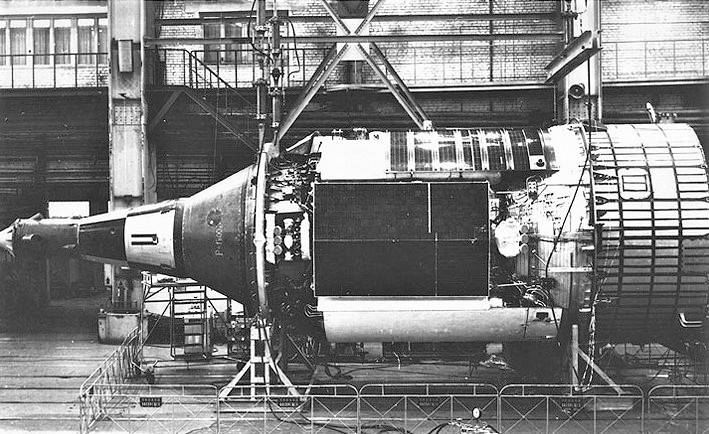
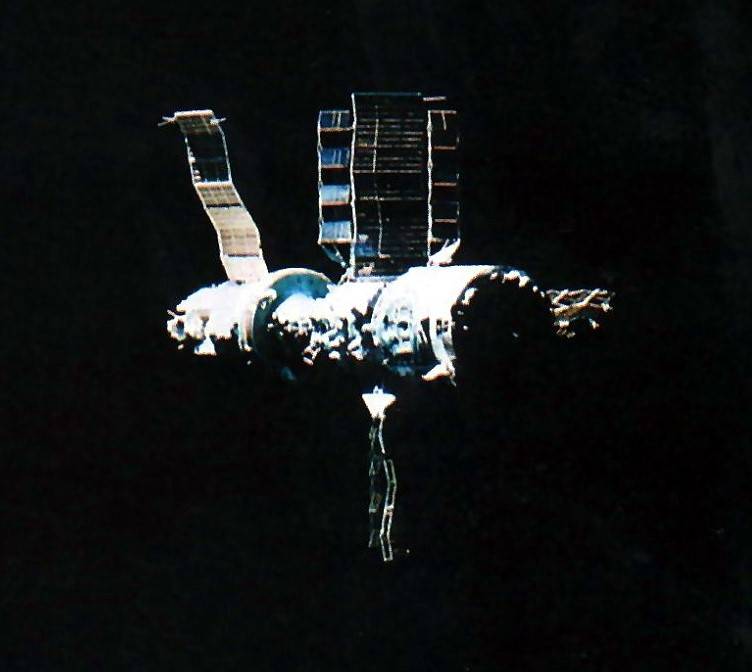

Left: A TKS resupply vehicle, with a reentry capsule at left, during ground testing.
Credit: Image courtesy RussianSpaceWeb.com. Middle: The Salyut 7 space
station with the Kosmos 1686 TKS vehicle at left. Credit: Image courtesy of
RKK Energia. Right: The Mir space station, with four TKS-derived modules in a
cross-shaped pattern – clockwise from upper right, Spektr, Kristall, Kvant-2, and
Priroda, with the smaller Kvant module at top, partially hidden by a Spektr solar array.
In addition to the Progress cargo vehicle, in the 1970s the Soviet Union developed a larger resupply spacecraft for their short-lived military Almaz space station program. Known by the Russian acronym TKS, these vehicles could carry nearly 10,000 pounds of cargo and could include a reentry capsule capable of returning not only cargo but also crew, although the Soviets never exercised that latter capability. After a solo test flight in 1977, a TKS vehicle designated Kosmos 1267 docked with Salyut 6 in June 1981, following the departure of its last crew. The module remained docked until the complex reentered the Earth’s atmosphere in February 1978. The next two TKS spacecraft, Kosmos 1443 and Kosmos 1686, docked with Salyut 7 in March 1983 and September 1985, respectively, while long-duration crews resided aboard the station. The first employed a landing capsule that returned 770 pounds of material to the ground. The Soviets modified the TKS resupply spacecraft to serve as permanent modules of the Mir space station, such as Kvant, Kvant-2, Kristall, Spektr, and Priroda, each designed for a special operational or scientific purpose. A modified TKS became the Zarya FBG module, the first element of the International Space Station launched in 1998, while its backup reached the space station as the Nauka MLM research module in 2021.

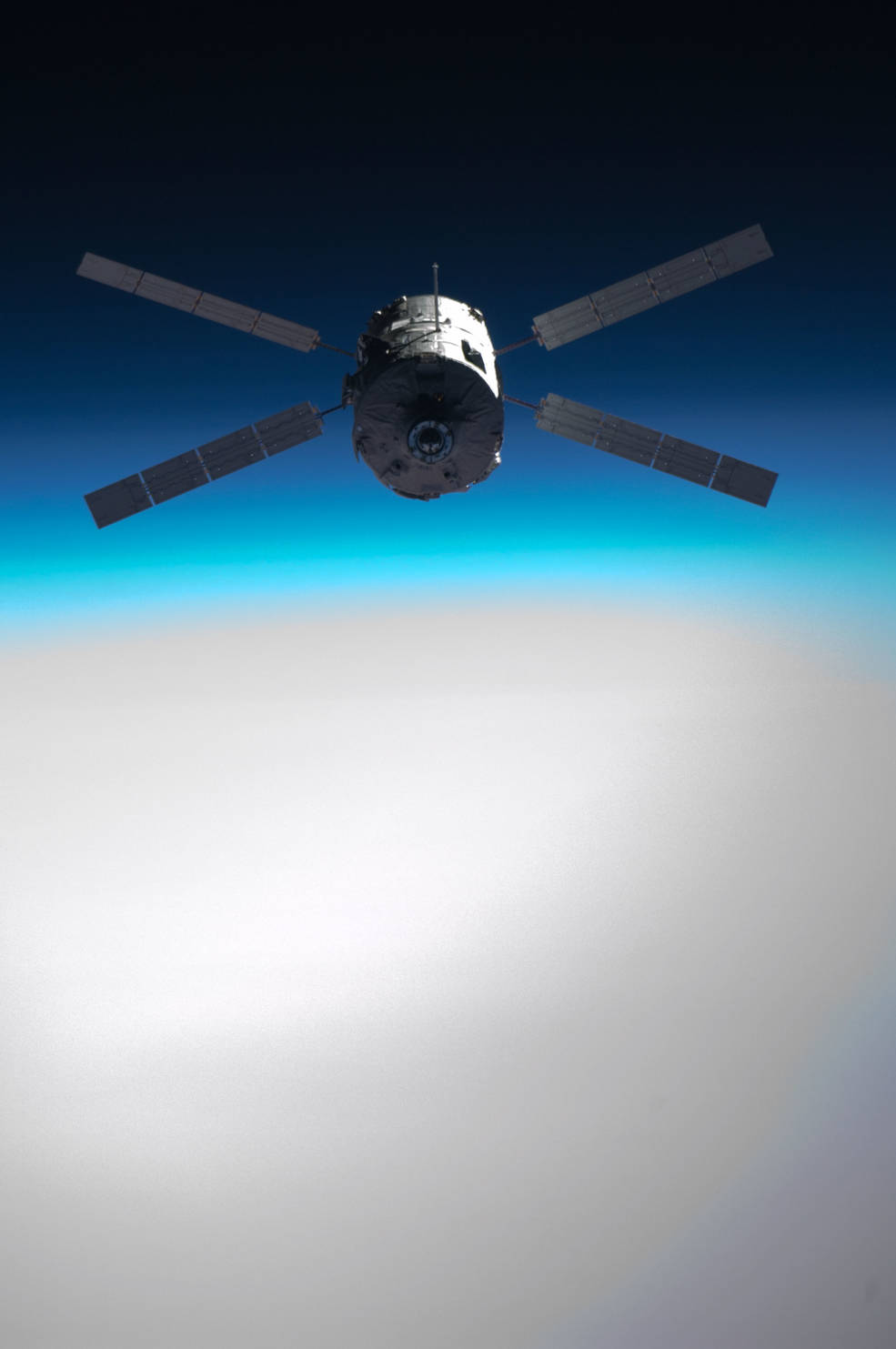
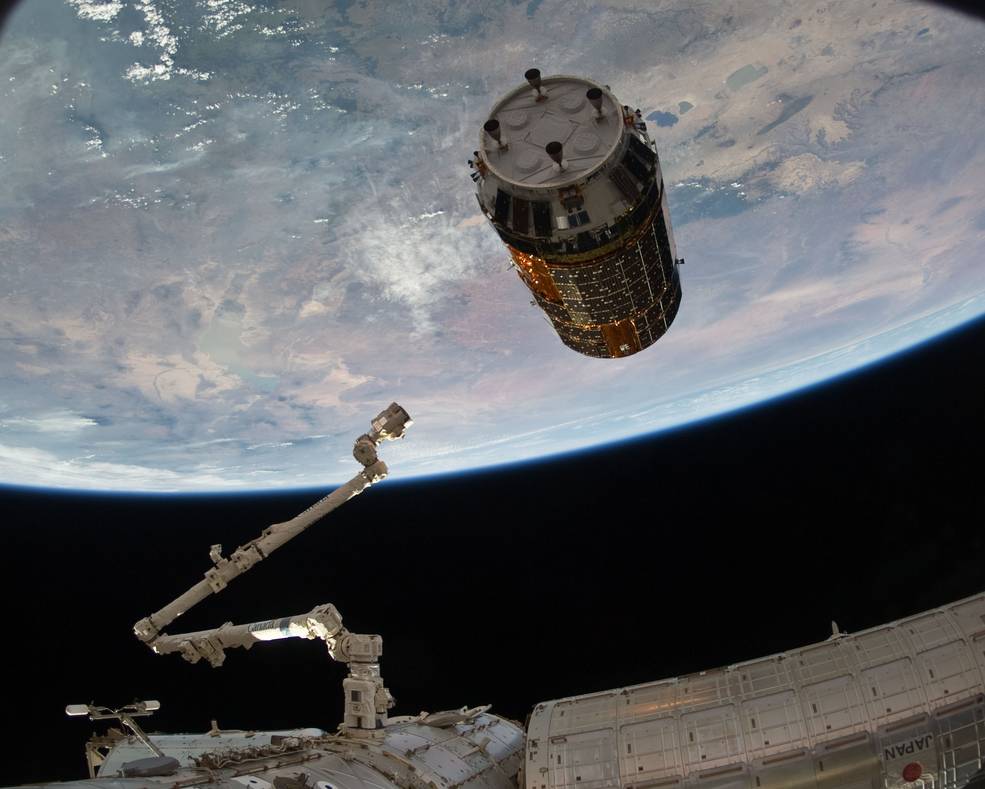
Left: The International Space Station in 2011, with the space shuttle Endeavour
docked at left. Middle: The European Space Agency’s Automated Transfer Vehicle
approaches the space station. Right: The space station’s robotic arm about to
grapple the Japan Aerospace Exploration Agency’s H-II Transport Vehicle.
The International Space Station is a complex orbital outpost that requires a fleet of spacecraft for its continued safe and productive operations. Each type of vehicle provides a unique set of capabilities that as an aggregate ensure the safety of the station’s occupants and provide the necessary infrastructure to maintain the ongoing world-class research aboard the laboratory. Between 1998 and 2011, the space shuttle enabled the construction and outfitting of the orbital facility, performed numerous crew rotations, and had the largest return capability of any visiting vehicle. Since the beginning of space station operations, the Soyuz spacecraft has provided for crew transport to and from the various orbital facilities while additionally providing a modest up and down cargo capability. The European Space Agency’s Automated Transfer Vehicle (ATV)flew five missions to the space station between 2008 and 2014. The uncrewed ATV could transport 17,000 pounds of cargo to the station and since it docked at the aft end of the Service Module, could also serve to reboost the complex. The large size of the H-II Transport Vehicle (HTV), provided by the Japan Aerospace Exploration Agency, enabled it to bring refrigerator-sized research racks and external payloads to the station after the retirement of the space shuttle. Nine HTV’s resupplied the station between 2009 and 2020, each with a cargo capability of up to 13,700 pounds. Neither the ATV nor the HTV provided a return capability.




Left: The space station’s robotic arm grapples a SpaceX Dragon cargo resupply spacecraft. Middle left: The robotic
arm grapples an early standard variant of the Cygnus cargo vehicle. Middle right: The robotic arm grapples an
enhanced Cygnus spacecraft. Right: A Cargo Dragon 2 spacecraft departs the space station.
To partially fulfill that return requirement, in 2005, NASA initiated the commercial cargo resupply program for the space station. The first contract with the SpaceX Corporation led to the development of the Cargo Dragon spacecraft that since the first demonstration flight has flown 26 missions to the space station, with only one launch failure. The Dragon spacecraft can launch pressurized cargo in the capsule and unpressurized payloads in its trunk, and can return pressurized cargo and science samples to Earth. The Cargo Dragon evolved into the Crew Dragon spacecraft that now provides regular crew transportation to and from the space station. The second contract with Orbital Sciences Corporation, now Northrup Grumman, developed the Cygnus spacecraft to supply pressurized cargo to the space station. Since 2013, 18 Cygnus spacecraft have provided cargo resupply services to date, with only one launch failure.
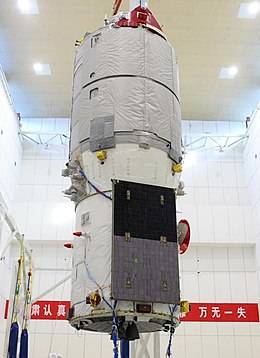

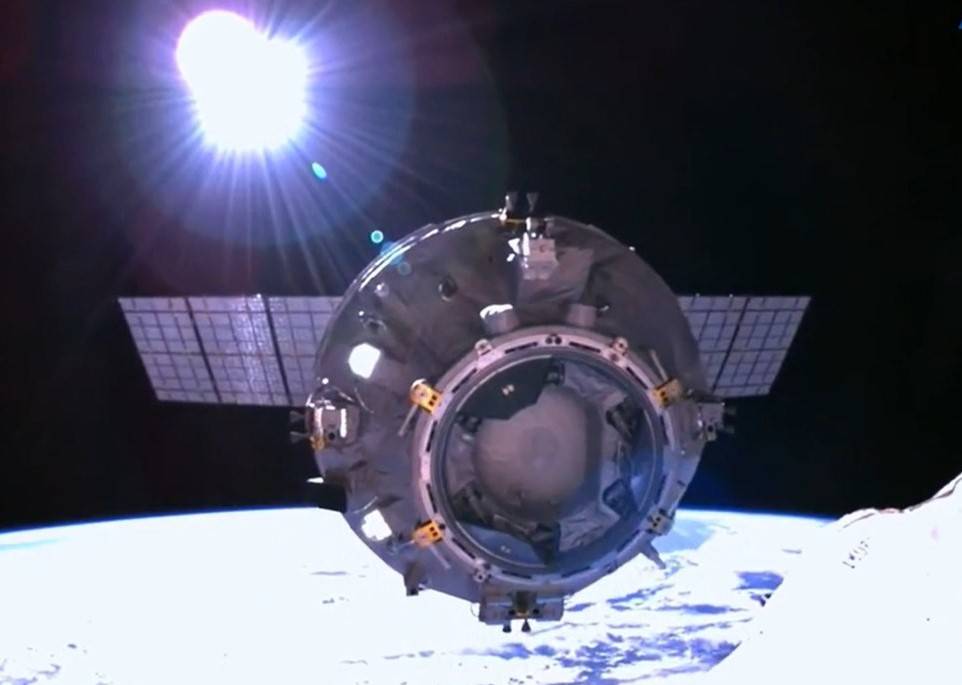
Left: The Tianzhou 2 cargo resupply craft during preflight processing. Middle: The Tiangong
China Space Station seen from the departing Tianzhou 4 cargo resupply vehicle in November
2022. Right: The departing Tianzhou 4 seen from the Tiangong space station.
To maintain their Tiangong space station, Chinese space officials rely on the Tianzhou resupply vehicle. Derived from the earlier Tiangong 1 and 2 experimental space stations, each Tianzhou spacecraft can carry up to 15,200 pounds of cargo and can also refuel the new space station by docking at the aft port of the Tianhe core module. Tianzhou 1 docked with the Tiangong 2 space station in April 2017, remaining docked for five months, and performing a refueling of the station. Tianzhou 2 docked with the new Tianhe core module in May 2021, remaining docked until March 2022. On Nov. 12, 2022, Tianzhou 5 docked with Tiangong just over two hours after launch, a record unmatched by any other resupply vehicle.


























